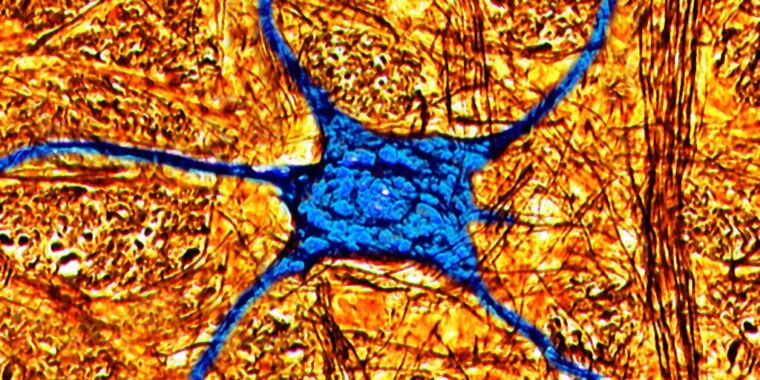Researchers track individual neurons as they respond to words

🌈 Abstract
The article discusses the latest research on understanding the neural mechanisms underlying human language comprehension. It focuses on a study led by Mohsen Jamali, a computational neuroscience researcher at Harvard Medical School, who investigated how individual neurons in the left prefrontal cortex of the brain respond to different types of linguistic stimuli.
🙋 Q&A
[01] Probing the Brain
1. What was unique about Jamali's experiment?
- Jamali's experiment involved recording the activity of individual neurons in the left prefrontal cortex of human patients, which is a rare opportunity as most similar studies are limited to animal models.
- The experiment used two types of electrodes - traditional tungsten microarrays and the latest Neuropixel probes, which can record the activity of over a hundred neurons simultaneously.
2. What types of linguistic stimuli were used in the experiment?
- The experiment played a mixture of sentences, words, and gibberish sounds that sounded like words to the patients.
- They also included a short story about Elvis as part of the stimuli.
3. How did the researchers analyze the neuronal activity data?
- The electrodes recorded continuous voltage signals at a high sampling rate of 30 kHz.
- The researchers used statistical analysis to separate the activity of individual neurons from the recorded signals.
- They then synchronized the neuronal activity with the timing of the linguistic stimuli played to the patients.
[02] Putting Words in Drawers
1. How did the researchers represent the words used in the experiment?
- The researchers used the Word2Vec technique to represent each word as a vector in a 300-dimensional space, capturing the relationships between words.
- They then looked at the distances between these word vectors to identify clusters of words that belonged to the same semantic category.
2. What did the researchers find about the neuronal responses to different word clusters?
- They identified 9 distinct semantic clusters, such as words referring to animals, feelings, activities, names, weather, etc.
- They found that specific neurons responded preferentially to words belonging to certain semantic clusters, with some neurons responding to multiple clusters.
[03] The Mechanics of Comprehension
1. How did the researchers test whether neurons responded to the sound or meaning of words?
- They used homophones, such as "sun" and "son", to test if the neuronal responses changed based on the context and meaning of the word, rather than just the sound.
- They found that the neuronal responses changed depending on the context, suggesting the neurons were responding to the meaning rather than just the sound of the words.
2. What other questions does the research team want to explore further?
- How the brain represents the syntactic structure of language, beyond just the semantic content.
- How the brain processes language during speech production, in addition to comprehension.
- How information is processed across different layers of the cortex using the Neuropixel probes.